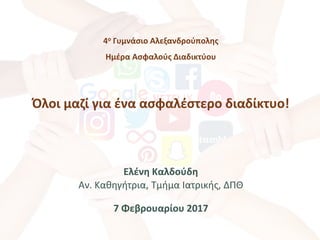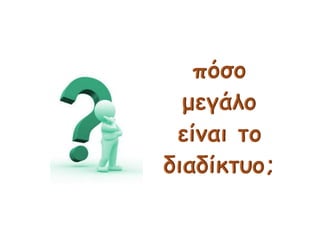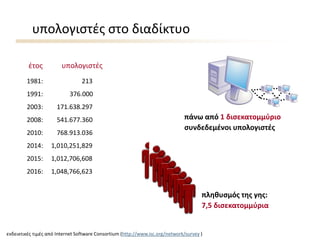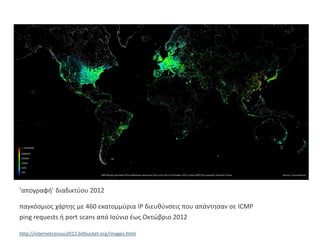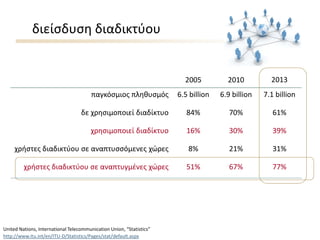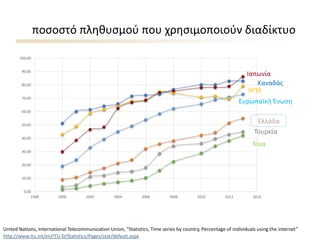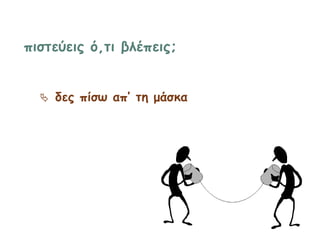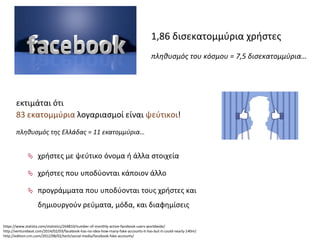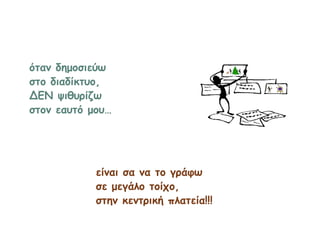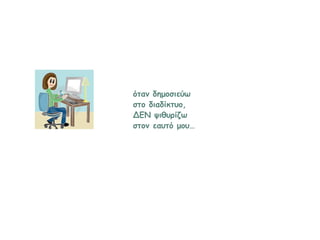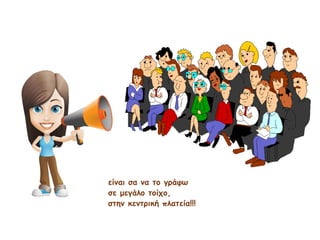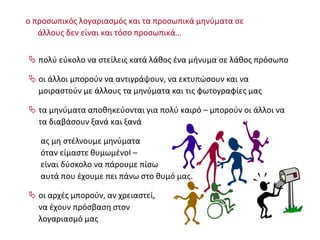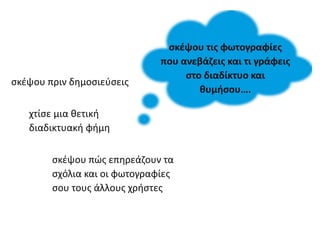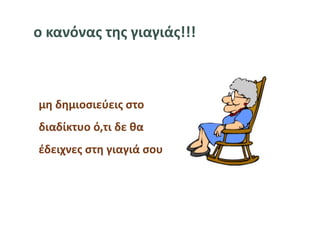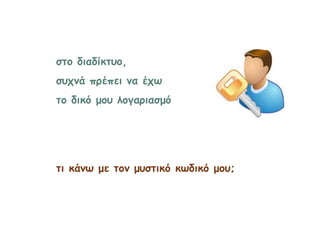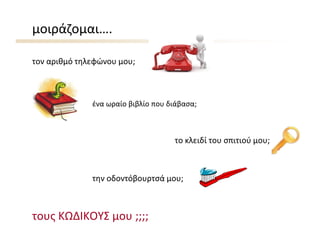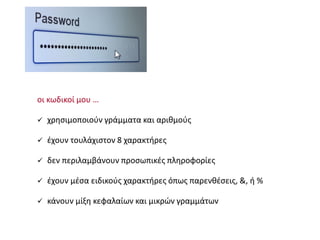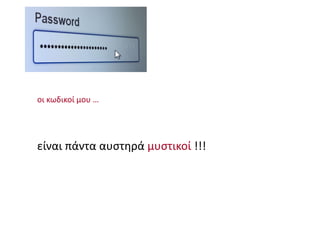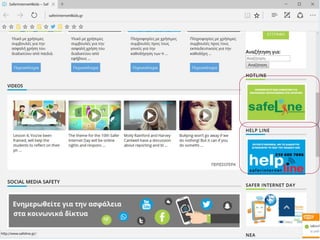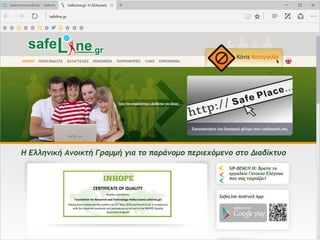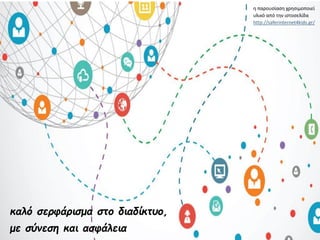ЮЮЛЮПЮЙ ЮМЮБЮЖЮЏ ЮГЮЙЮБ ЮЮНЮБ ЮБЯЯЮБЮЛЮЯЯЮЕЯЮП ЮДЮЙЮБЮДЮЏЮКЯЯ ЮП!
- 1. 4ЮП ЮЯ ЮМЮНЮЌЯЮЙЮП ЮЮЛЮЕЮОЮБЮНЮДЯЮПЯЯЮПЮЛЮЗЯ ЮЮМЮЯЮБ ЮЯЯЮБЮЛЮПЯЯ ЮЮЙЮБЮДЮЙЮКЯЯЮПЯ ЮЮЛЮПЮЙ ЮМЮБЮЖЮЏ ЮГЮЙЮБ ЮЮНЮБ ЮБЯЯЮБЮЛЮЯЯЮЕЯЮП ЮДЮЙЮБЮДЮЏЮКЯЯ ЮП! ЮЮЛЮЮНЮЗ ЮЮБЮЛЮДЮПЯЮДЮЗ ЮЮН. ЮЮБЮИЮЗЮГЮЎЯЯЮЙЮБ, TЮМЮЎЮМЮБ ЮЮБЯЯЮЙЮКЮЎЯ, ЮЮ Ю 7 ЮІЮЕЮВЯЮПЯ ЮБЯЮЏЮПЯ 2017
- 3. ЯЮЙ ЮЕЮЏЮНЮБЮЙ ЯЮП ЮДЮЙЮБЮДЮЏЮКЯЯ ЮП (= internet) яЎ ЮЮНЮБЯ Я ЯЮПЮЛЮПЮГЮЙЯЯЮЎЯ ЯЮПЯ ЮЕЮЏЮНЮБЮЙ ЯЯ ЮНЮДЮЕЮДЮЕЮМЮЮНЮПЯ ЯЯЮП internet ЮМЯЮПЯЮЕЮЏ ЮНЮБ ЯЮЌЯЮЕЮЙ ЮМЮЯЮПЯ ЯЮЕ ЮМЮЙЮБ ЯЮЛЮЗЮИЯЯЮБ Я ЯЮЗЯЮЕЯЮЙЯЮН яЎ ЯЮП internet ЯЯЮЗЯЮЙЮМЮПЯЮПЮЙЮЕЮЏ ЮЮНЮБ ЯЯ ЮГЮКЮЕЮКЯЮЙЮМЮЮНЮП ЯЯЯЯЯЮКЮПЮЛЮЛЮП ЮГЮЙЮБ ЯЮЗЮН ЮЕЯЮЙЮКЮПЮЙЮНЯЮНЮЏЮБ ЯЯЮН Я ЯЮПЮЛЮПЮГЮЙЯЯЯЮН, ЯЮП TCP/IP ЮЮНЮБ ЯЮБЮГЮКЯЯЮМЮЙЮП ЯЯЮНЮПЮЛЮП ЮБЯЯ ЮДЮЏЮКЯЯ ЮБ Я ЯЮПЮЛЮПЮГЮЙЯЯЯЮН ЯЮПЯ ЮЕЯЮЙЮКЮПЮЙЮНЯЮНЮПЯЮН ЮМЮЕ ЮЮНЮБ ЯЯ ЮГЮКЮЕЮКЯЮЙЮМЮЮНЮП ЯЯЮНЮПЮЛЮП ЮБЯЯ ЮКЮБЮНЯЮНЮЕЯ ЮЗЮЛЮЕЮКЯЯЮПЮНЮЙЮКЮЎЯ ЮЕЯЮЙЮКЮПЮЙЮНЯЮНЮЏЮБЯ
- 5. Я ЯЮПЮЛЮПЮГЮЙЯЯЮЯ ЯЯЮП ЮДЮЙЮБЮДЮЏЮКЯЯ ЮП 1981: 213 1991: 376.000 2003: 171.638.297 2008: 541.677.360 2010: 768.913.036 2014: 1,010,251,829 2015: 1,012,706,608 2016: 1,048,766,623 ЮЕЮНЮДЮЕЮЙЮКЯЮЙЮКЮЯ ЯЮЙЮМЮЯ ЮБЯЯ Internet Software Consortium (http://www.isc.org/network/survey ) Я ЯЮПЮЛЮПЮГЮЙЯЯЮЯЮЯЮПЯ ЯЮЌЮНЯ ЮБЯЯ 1 ЮДЮЙЯЮЕЮКЮБЯЮПЮМЮМЯЯЮЙЮП ЯЯ ЮНЮДЮЕЮДЮЕЮМЮЮНЮПЮЙ Я ЯЮПЮЛЮПЮГЮЙЯЯЮЯ ЯЮЛЮЗЮИЯ ЯЮМЯЯ ЯЮЗЯ ЮГЮЗЯ: 7,5 ЮДЮЙЯЮЕЮКЮБЯЮПЮМЮМЯЯЮЙЮБ
- 6. тЮБЯЮПЮГЯЮБЯЮЎт ЮДЮЙЮБЮДЮЙЮКЯЯЮПЯ 2012 ЯЮБЮГЮКЯЯЮМЮЙЮПЯ ЯЮЌЯЯЮЗЯ ЮМЮЕ 460 ЮЕЮКЮБЯЮПЮМЮМЯЯЮЙЮБ IP ЮДЮЙЮЕЯ ЮИЯЮНЯЮЕЮЙЯ ЯЮПЯ ЮБЯЮЌЮНЯЮЗЯЮБЮН ЯЮЕ ICMP ping requests ЮЎ port scans ЮБЯЯ ЮЮПЯЮНЮЙЮП ЮЯЯ ЮЮКЯЯЮВЯЮЙЮП 2012 http://internetcensus2012.bitbucket.org/images.html
- 7. ЮЗ ЮГЮЗ ЯЯЮП ЯЮКЮПЯЮЌЮДЮЙ Data Date: October 1, 1994 - March 31, 1995 Data: M. Imhoff of NASA GSFC and C. Elvidge of NOAA NGDC. Image by Craig Mayhew and Robert Simmon, NASA GSFC http://eoimages.gsfc.nasa.gov/images/imagerecords/55000/55167/earth_lights.gif
- 8. ЮДЮЙЮЕЮЏЯЮДЯ ЯЮЗ ЮДЮЙЮБЮДЮЙЮКЯЯЮПЯ 2005 2010 2013 ЯЮБЮГЮКЯЯЮМЮЙЮПЯ ЯЮЛЮЗЮИЯ ЯЮМЯЯ 6.5 billion 6.9 billion 7.1 billion ЮДЮЕ ЯЯЮЗЯЮЙЮМЮПЯЮПЮЙЮЕЮЏ ЮДЮЙЮБЮДЮЏЮКЯЯ ЮП 84% 70% 61% ЯЯЮЗЯЮЙЮМЮПЯЮПЮЙЮЕЮЏ ЮДЮЙЮБЮДЮЏЮКЯЯ ЮП 16% 30% 39% ЯЯЮЎЯЯЮЕЯ ЮДЮЙЮБЮДЮЙЮКЯЯЮПЯ ЯЮЕ ЮБЮНЮБЯЯЯ ЯЯЯЮМЮЕЮНЮЕЯ ЯЯЯЮЕЯ 8% 21% 31% ЯЯЮЎЯЯЮЕЯ ЮДЮЙЮБЮДЮЙЮКЯЯЮПЯ ЯЮЕ ЮБЮНЮБЯЯЯ ЮГЮМЮЮНЮЕЯ ЯЯЯЮЕЯ 51% 67% 77% United Nations, International Telecommunication Union, тStatisticsт http://www.itu.int/en/ITU-D/Statistics/Pages/stat/default.aspx
- 9. ЯЮПЯЮПЯЯЯ ЯЮЛЮЗЮИЯ ЯЮМЮПЯ ЯЮПЯ ЯЯЮЗЯЮЙЮМЮПЯЮПЮЙЮПЯЮН ЮДЮЙЮБЮДЮЏЮКЯЯ ЮП 0,00 10,00 20,00 30,00 40,00 50,00 60,00 70,00 80,00 90,00 100,00 1998 2000 2002 2004 2006 2008 2010 2012 2014 ЮЮЏЮНЮБ ЮЄЮПЯ ЯЮКЮЏЮБ ЮЮЛЮЛЮЌЮДЮБ ЮЯ ЯЯЯЮБЯЮКЮЎ ЮЮНЯЯЮЗ ЮЮ Ю ЮЮБЮНЮБЮДЮЌЯ ЮЮБЯЯЮНЮЏЮБ United Nations, International Telecommunication Union, тStatistics, Time series by country, Percentage of individuals using the internetт http://www.itu.int/en/ITU-D/Statistics/Pages/stat/default.aspx
- 10. ЯЯЮП ЮДЮЙЮБЮДЮЏЮКЯЯ ЮП ЮМЯЮПЯЯтІ ЮНЮБ ЮДЮЙЮБЮВЮЌЯЯ ЮНЮБ ЮДЮЗЮМЮПЯЮЙЮЕЯЯЯ ЮКЮБЮЙ ЯЯ ЯЮНЮЌ ЯЯЮЯЮЕЮЙ ЮНЮБ ЮЯЯ ЯЮП ЮДЮЙЮКЯ ЮМЮПЯ ЮЛЮПЮГЮБЯЮЙЮБЯЮМЯ ЮНЮБ ЮЕЯЮЙЮКЮПЮЙЮНЯЮНЮЎЯЯ
- 11. ЯЮЙЯЯЮЕЯЮЕЮЙЯ Я,ЯЮЙ ЮВЮЛЮЯЮЕЮЙЯ; я Я,ЯЮЙ ЮГЯ ЮБЮЛЮЏЮЖЮЕЮЙ ЮДЮЕЮН ЮЕЮЏЮНЮБЮЙ ЯЯЯ ЯЯЯ
- 12. ЯЮКЮЯЮПЯ Я,ЯЮЙ ЮВЮЛЮЯЮЕЮЙЯ ЯЯЮП ЮДЮЙЮБЮДЮЏЮКЯЯ ЮП ЮКЮБЮЙ ЮИЯ ЮМЮЎЯЮПЯ тІЯЮП ЮКЮЛЮЕЮЙЮДЮЏ ЮЕЮЏЮНЮБЮЙ ЮЗ ЮКЯЮЙЯЮЙЮКЮЎ ЯЮКЮЯЮЗ ЮНЮБ ЮБЮМЯЮЙЯЮВЮЗЯЮЕЮЏЯ ЮБЯ ЯЮЌ ЯЮПЯ ЮВЮЛЮЯЮЕЮЙЯ ЯЯЮП ЮДЮЙЮБЮДЮЏЮКЯЯ ЮП ЮКЮБЮЙ ЯЮПЯ Я ЮЛЯЮГЮПЯ Я ЮГЮЙЮБ ЯЮПЯ Я ЮПЯЮПЮЏЮПЯ Я ЮДЮЗЮМЮПЯЮЙЮЕЯЮИЮЗЮКЮБЮН ЮБЮН ЮКЮЌЯЮЙ ЯЮПЯ ЮДЮЕЮЙЯ ЮЕЯЮЗЯЮЕЮЌЯЮЕЮЙ ЯЮБ ЯЯ ЮНЮБЮЙЯЮИЮЎЮМЮБЯЮЌ ЯЮПЯ ЮЕЮЏЮНЮБЮЙ ЯЮЗЮМЮБЮНЯЮЙЮКЯ ЮНЮБ ЯЮП ЯЯ ЮЖЮЗЯЮЎЯЮЕЮЙЯ ЮМЮЕ ЮКЮЌЯЮПЮЙЮПЮН ЮМЮЕЮГЮБЮЛЯЯЮЕЯЮП, ЯЯЯЯ ЮЮНЮБ ЮГЮПЮНЮЙЯ ЮЎ ЮКЮБЮИЮЗЮГЮЗЯЮЎ
- 13. ЯЮЙЯЯЮЕЯЮЕЮЙЯ Я,ЯЮЙ ЮВЮЛЮЯЮЕЮЙЯ; я ЮДЮЕЯ ЯЮЏЯЯ ЮБЯт ЯЮЗ ЮМЮЌЯЮКЮБ
- 14. 1,86 ЮДЮЙЯЮЕЮКЮБЯЮПЮМЮМЯЯЮЙЮБ ЯЯЮЎЯЯЮЕЯ ЯЮЛЮЗЮИЯ ЯЮМЯЯ ЯЮПЯ ЮКЯЯЮМЮПЯ = 7,5 ЮДЮЙЯЮЕЮКЮБЯЮПЮМЮМЯЯЮЙЮБтІ https://www.statista.com/statistics/264810/number-of-monthly-active-facebook-users-worldwide/ http://venturebeat.com/2014/02/03/facebook-has-no-idea-how-many-fake-accounts-it-has-but-it-could-nearly-140m/ http://edition.cnn.com/2012/08/02/tech/social-media/facebook-fake-accounts/ я ЯЯЮЎЯЯЮЕЯ ЮМЮЕ ЯЮЕЯЯЮЙЮКЮП ЯЮНЮПЮМЮБ ЮЎ ЮЌЮЛЮЛЮБ ЯЯЮПЮЙЯЮЕЮЏЮБ я ЯЯЮЎЯЯЮЕЯ ЯЮПЯ Я ЯЮПЮДЯЮПЮНЯЮБЮЙ ЮКЮЌЯЮПЮЙЮПЮН ЮЌЮЛЮЛЮП я ЯЯЮПЮГЯЮЌЮМЮМЮБЯЮБ ЯЮПЯ Я ЯЮПЮДЯЮПЮНЯЮБЮЙ ЯЮПЯ Я ЯЯЮЎЯЯЮЕЯ ЮКЮБЮЙ ЮДЮЗЮМЮЙЮПЯ ЯЮГЮПЯЮН ЯЮЕЯЮМЮБЯЮБ, ЮМЯЮДЮБ, ЮКЮБЮЙ ЮДЮЙЮБЯЮЗЮМЮЏЯЮЕЮЙЯ ЮЕЮКЯЮЙЮМЮЌЯЮБЮЙ ЯЯЮЙ 83 ЮЕЮКЮБЯЮПЮМЮМЯЯЮЙЮБ ЮЛЮПЮГЮБЯЮЙЮБЯЮМЮПЮЏ ЮЕЮЏЮНЮБЮЙ ЯЮЕЯЯЮЙЮКЮПЮЙ! ЯЮЛЮЗЮИЯ ЯЮМЯЯ ЯЮЗЯ ЮЮЛЮЛЮЌЮДЮБЯ = 11 ЮЕЮКЮБЯЮПЮМЮМЯЯЮЙЮБтІ
- 15. ЯЯЮБЮН ЮДЮЗЮМЮПЯЮЙЮЕЯЯ ЯЯЮП ЮДЮЙЮБЮДЮЏЮКЯЯ ЮП, ЮЮЮ ЯЮЙЮИЯ ЯЮЏЮЖЯ ЯЯЮПЮН ЮЕЮБЯ ЯЯ ЮМЮПЯ тІ ЮЕЮЏЮНЮБЮЙ ЯЮБ ЮНЮБ ЯЮП ЮГЯЮЌЯЯ ЯЮЕ ЮМЮЕЮГЮЌЮЛЮП ЯЮПЮЏЯЮП, ЯЯЮЗЮН ЮКЮЕЮНЯЯЮЙЮКЮЎ ЯЮЛЮБЯЮЕЮЏЮБ!!!
- 16. ЯЯЮБЮН ЮДЮЗЮМЮПЯЮЙЮЕЯЯ ЯЯЮП ЮДЮЙЮБЮДЮЏЮКЯЯ ЮП, ЮЮЮ ЯЮЙЮИЯ ЯЮЏЮЖЯ ЯЯЮПЮН ЮЕЮБЯ ЯЯ ЮМЮПЯ тІ
- 17. ЮЕЮЏЮНЮБЮЙ ЯЮБ ЮНЮБ ЯЮП ЮГЯЮЌЯЯ ЯЮЕ ЮМЮЕЮГЮЌЮЛЮП ЯЮПЮЏЯЮП, ЯЯЮЗЮН ЮКЮЕЮНЯЯЮЙЮКЮЎ ЯЮЛЮБЯЮЕЮЏЮБ!!!
- 18. я ЯЮПЮЛЯ ЮЕЯЮКЮПЮЛЮП ЮНЮБ ЯЯЮЕЮЏЮЛЮЕЮЙЯ ЮКЮБЯЮЌ ЮЛЮЌЮИЮПЯ ЮЮНЮБ ЮМЮЎЮНЯ ЮМЮБ ЯЮЕ ЮЛЮЌЮИЮПЯ ЯЯЯЯЯЯЮП я ЮПЮЙ ЮЌЮЛЮЛЮПЮЙ ЮМЯЮПЯЮПЯЮН ЮНЮБ ЮБЮНЯЮЙЮГЯЮЌЯЮПЯ ЮН, ЮНЮБ ЮЕЮКЯЯ ЯЯЯЮПЯ ЮН ЮКЮБЮЙ ЮНЮБ ЮМЮПЮЙЯЮБЯЯЮПЯЮН ЮМЮЕ ЮЌЮЛЮЛЮПЯ Я ЯЮБ ЮМЮЗЮНЯЮМЮБЯЮБ ЮКЮБЮЙ ЯЮЙЯ ЯЯЯЮПЮГЯЮБЯЮЏЮЕЯ ЮМЮБЯ я ЯЮБ ЮМЮЗЮНЯЮМЮБЯЮБ ЮБЯЮПЮИЮЗЮКЮЕЯЮПЮНЯЮБЮЙ ЮГЮЙЮБ ЯЮПЮЛЯ ЮКЮБЮЙЯЯ т ЮМЯЮПЯЮПЯЮН ЮПЮЙ ЮЌЮЛЮЛЮПЮЙ ЮНЮБ ЯЮБ ЮДЮЙЮБЮВЮЌЯЮПЯ ЮН ЮОЮБЮНЮЌ ЮКЮБЮЙ ЮОЮБЮНЮЌ ЮБЯ ЮМЮЗ ЯЯЮЮЛЮНЮПЯ ЮМЮЕ ЮМЮЗЮНЯЮМЮБЯЮБ ЯЯЮБЮН ЮЕЮЏЮМЮБЯЯЮЕ ЮИЯ ЮМЯЮМЮЮНЮПЮ т ЮЕЮЏЮНЮБЮЙ ЮДЯЯЮКЮПЮЛЮП ЮНЮБ ЯЮЌЯЮПЯ ЮМЮЕ ЯЮЏЯЯ ЮБЯ ЯЮЌ ЯЮПЯ ЮЯЮПЯ ЮМЮЕ ЯЮЕЮЙ ЯЮЌЮНЯ ЯЯЮП ЮИЯ ЮМЯ ЮМЮБЯ. я ЮПЮЙ ЮБЯЯЮЯ ЮМЯЮПЯЮПЯЮН, ЮБЮН ЯЯЮЕЮЙЮБЯЯЮЕЮЏ, ЮНЮБ ЮЯЮПЯ ЮН ЯЯЯЯЮВЮБЯЮЗ ЯЯЮПЮН ЮЛЮПЮГЮБЯЮЙЮБЯЮМЯ ЮМЮБЯ ЮП ЯЯЮПЯЯЯЮЙЮКЯЯ ЮЛЮПЮГЮБЯЮЙЮБЯЮМЯЯ ЮКЮБЮЙ ЯЮБ ЯЯЮПЯЯЯЮЙЮКЮЌ ЮМЮЗЮНЯЮМЮБЯЮБ ЯЮЕ ЮЌЮЛЮЛЮПЯ Я ЮДЮЕЮН ЮЕЮЏЮНЮБЮЙ ЮКЮБЮЙ ЯЯЯЮП ЯЯЮПЯЯЯЮЙЮКЮЌтІ
- 19. ЯЮКЮЯЮПЯ ЯЮЙЯ ЯЯЯЮПЮГЯЮБЯЮЏЮЕЯ ЯЮПЯ ЮБЮНЮЕЮВЮЌЮЖЮЕЮЙЯ ЮКЮБЮЙ ЯЮЙ ЮГЯЮЌЯЮЕЮЙЯ ЯЯЮП ЮДЮЙЮБЮДЮЏЮКЯЯ ЮП ЮКЮБЮЙ ЮИЯ ЮМЮЎЯЮПЯ тІ. ЯЮКЮЯЮПЯ ЯЯЮЙЮН ЮДЮЗЮМЮПЯЮЙЮЕЯЯЮЕЮЙЯ ЯЮКЮЯЮПЯ ЯЯЯ ЮЕЯЮЗЯЮЕЮЌЮЖЮПЯ ЮН ЯЮБ ЯЯЯЮЛЮЙЮБ ЮКЮБЮЙ ЮПЮЙ ЯЯЯЮПЮГЯЮБЯЮЏЮЕЯ ЯЮПЯ ЯЮПЯ Я ЮЌЮЛЮЛЮПЯ Я ЯЯЮЎЯЯЮЕЯ ЯЯЮЏЯЮЕ ЮМЮЙЮБ ЮИЮЕЯЮЙЮКЮЎ ЮДЮЙЮБЮДЮЙЮКЯЯ ЮБЮКЮЎ ЯЮЎЮМЮЗ
- 20. ЮМЮЗ ЮДЮЗЮМЮЙЮПЯЮЙЮЕЯЮЕЮЙЯ ЯЯЮП ЮДЮЙЮБЮДЮЏЮКЯЯ ЮП Я,ЯЮЙ ЮДЮЕ ЮИЮБ ЮЮДЮЕЮЙЯЮНЮЕЯ ЯЯЮЗ ЮГЮЙЮБЮГЮЙЮЌ ЯЮПЯ ЮП ЮКЮБЮНЯЮНЮБЯ ЯЮЗЯ ЮГЮЙЮБЮГЮЙЮЌЯ!!!
- 21. ЯЯЮП ЮДЮЙЮБЮДЮЏЮКЯЯ ЮП, ЯЯ ЯЮНЮЌ ЯЯЮЯЮЕЮЙ ЮНЮБ ЮЯЯ ЯЮП ЮДЮЙЮКЯ ЮМЮПЯ ЮЛЮПЮГЮБЯЮЙЮБЯЮМЯ ЯЮЙ ЮКЮЌЮНЯ ЮМЮЕ ЯЮПЮН ЮМЯ ЯЯЮЙЮКЯ ЮКЯЮДЮЙЮКЯ ЮМЮПЯ ;
- 22. ЮМЮПЮЙЯЮЌЮЖЮПЮМЮБЮЙтІ. ЯЮПЮН ЮБЯЮЙЮИЮМЯ ЯЮЗЮЛЮЕЯЯЮНЮПЯ ЮМЮПЯ ; ЯЮП ЮКЮЛЮЕЮЙЮДЮЏ ЯЮПЯ ЯЯЮЙЯЮЙЮПЯ ЮМЮПЯ ; ЮЮНЮБ ЯЯЮБЮЏЮП ЮВЮЙЮВЮЛЮЏЮП ЯЮПЯ ЮДЮЙЮЌЮВЮБЯЮБ; ЯЮЗЮН ЮПЮДЮПЮНЯЯЮВЮПЯ ЯЯЯЮЌ ЮМЮПЯ ; ЯЮПЯ Я ЮЮЉЮЮЮЮЮЅЮЃ ЮМЮПЯ ;;;;
- 23. ЮПЮЙ ЮКЯЮДЮЙЮКЮПЮЏ ЮМЮПЯ тІ яМ ЯЯЮЗЯЮЙЮМЮПЯЮПЮЙЮПЯЮН ЮГЯЮЌЮМЮМЮБЯЮБ ЮКЮБЮЙ ЮБЯЮЙЮИЮМЮПЯЯ яМ ЮЯЮПЯ ЮН ЯЮПЯ ЮЛЮЌЯЮЙЯЯЮПЮН 8 ЯЮБЯЮБЮКЯЮЎЯЮЕЯ яМ ЮДЮЕЮН ЯЮЕЯЮЙЮЛЮБЮМЮВЮЌЮНЮПЯ ЮН ЯЯЮПЯЯЯЮЙЮКЮЯ ЯЮЛЮЗЯЮПЯЮПЯЮЏЮЕЯ яМ ЮЯЮПЯ ЮН ЮМЮЯЮБ ЮЕЮЙЮДЮЙЮКЮПЯЯ ЯЮБЯЮБЮКЯЮЎЯЮЕЯ ЯЯЯЯ ЯЮБЯЮЕЮНЮИЮЯЮЕЮЙЯ, &, ЮЎ % яМ ЮКЮЌЮНЮПЯ ЮН ЮМЮЏЮОЮЗ ЮКЮЕЯЮБЮЛЮБЮЏЯЮН ЮКЮБЮЙ ЮМЮЙЮКЯЯЮН ЮГЯЮБЮМЮМЮЌЯЯЮН
- 24. ЮПЮЙ ЮКЯЮДЮЙЮКЮПЮЏ ЮМЮПЯ тІ яМ ЮМЯЮПЯЯ ЮНЮБ ЯЮПЯ Я ЮБЯЮПЮМЮНЮЗЮМЮПЮНЮЕЯЯЯ ЮЕЯЮКЮПЮЛЮБ яМ ЮЯЯ ЮДЮЙЮБЯЮПЯЮЕЯЮЙЮКЮПЯЯ ЮКЯЮДЮЙЮКЮПЯЯ ЮГЮЙЮБ ЮКЮЌЮИЮЕ ЮЛЮПЮГЮБЯЮЙЮБЯЮМЯ яМ ЯЮПЯ Я ЮБЮЛЮЛЮЌЮЖЯ ЯЯ ЯЮНЮЌ (ЮКЮЌЮИЮЕ ЮЛЮЏЮГЮПЯ Я ЮМЮЎЮНЮЕЯ)
- 25. ЮПЮЙ ЮКЯЮДЮЙЮКЮПЮЏ ЮМЮПЯ тІ ЮЕЮЏЮНЮБЮЙ ЯЮЌЮНЯЮБ ЮБЯ ЯЯЮЗЯЮЌ ЮМЯ ЯЯЮЙЮКЮПЮЏ !!!
- 26. ЮЗ ЯЮБЯЮПЯ ЯЮЏЮБЯЮЗ ЮБЯ ЯЮЎ ЯЯЮЗЯЮЙЮМЮПЯЮПЮЙЮЕЮЏ Я ЮЛЮЙЮКЯ ЮБЯЯ ЯЮЗЮН ЮЙЯЯЮПЯЮЕЮЛЮЏЮДЮБ http://saferinternet4kids.gr/ ЯЮЕЯЮЙЯЯЯЯЮЕЯЮБ ЯЯЮПЮН ЮЙЯЯЮПЯЯЯЮП ЯЮЗЯ ЮДЯЮЌЯЮЗЯ Safer Internet for Kids ЯЮПЯ ЯЯ ЮНЯЮПЮНЮЏЮЖЮЕЮЙ ЯЮП ЮЮДЯЯ ЮМЮБ ЮЄЮЕЯЮНЮПЮЛЮПЮГЮЏЮБЯ ЮКЮБЮЙ ЮЯЮЕЯ ЮНЮБЯ http://saferinternet4kids.gr/
- 30. ЮКЮБЮЛЯ ЯЮЕЯЯЮЌЯЮЙЯЮМЮБ ЯЯЮП ЮДЮЙЮБЮДЮЏЮКЯЯ ЮП, ЮМЮЕ ЯЯЮНЮЕЯЮЗ ЮКЮБЮЙ ЮБЯЯЮЌЮЛЮЕЮЙЮБ ЮЗ ЯЮБЯЮПЯ ЯЮЏЮБЯЮЗ ЯЯЮЗЯЮЙЮМЮПЯЮПЮЙЮЕЮЏ Я ЮЛЮЙЮКЯ ЮБЯЯ ЯЮЗЮН ЮЙЯЯЮПЯЮЕЮЛЮЏЮДЮБ http://saferinternet4kids.gr/
- 31. ЮЃЯЮПЮЙЯЮЕЮЏЮБ ЮЯЮЙЮКЮПЮЙЮНЯЮНЮЏЮБЯ ЮЮЛЮЮНЮЗ ЮЮБЮЛЮДЮПЯЮДЮЗ ЮЮНЮБЯЮЛЮЗЯЯЯЯЮЙЮБ ЮЮБЮИЮЗЮГЮЎЯЯЮЙЮБ ЮЄЮМЮЎЮМЮБ ЮЮБЯЯЮЙЮКЮЎЯ ЮЮЗЮМЮПЮКЯЮЏЯЮЕЮЙЮП Ю ЮБЮНЮЕЯЮЙЯЯЮЎЮМЮЙЮП ЮЯЮЌЮКЮЗЯ ЮЯЮБЮГЮЌЮНЮБ, ЮЮЛЮЕЮОЮБЮНЮДЯЮПЯЯЮПЮЛЮЗ 68100 Tel: 2551030329 & 6937124358 Email: kaldoudi@med.duth.gr ЮЮНЮБЯЮПЯЮЌ ЯЯЮЗЮН Ю ЮБЯЮПЯ ЯЮЏЮБЯЮЗ ЮЮЛЮЮНЮЗ ЮЮБЮЛЮДЮПЯЮДЮЗ ЮЮЛЮПЮЙ ЮМЮБЮЖЮЏ ЮГЮЙЮБ ЮЮНЮБ ЮБЯЯЮБЮЛЮЯЯЮЕЯЮП ЮДЮЙЮБЮДЮЏЮКЯЯ ЮП! 4ЮП ЮЯ ЮМЮНЮЌЯЮЙЮП ЮЮЛЮЕЮОЮБЮНЮДЯЮПЯЯЮПЮЛЮЗЯ, ЮЮМЮЯЮБ ЮЯЯЮБЮЛЮПЯЯ ЮЮЙЮБЮДЮЙЮКЯЯЮПЯ ЮЮЛЮЕЮОЮБЮНЮДЯЮПЯЯЮПЮЛЮЗ, 7 ЮІЮЕЮВЯЮПЯ ЮБЯЮЏЮПЯ 2017 Creative Commons 4.0 ЮЮЙЮЕЮИЮНЮЯ ЮЮНЮБЯЮПЯЮЌ ЮЮЗЮМЮЙЮПЯ ЯЮГЮПЯ - ЮЮЗ ЮЮМЯЮПЯЮЙЮКЮЎ ЮЇЯЮЎЯЮЗ - Ю ЮБЯЯЮМЮПЮЙЮБ ЮЮЙЮБЮНЮПЮМЮЎ http://iris.med.duth.gr/kaldoudi

